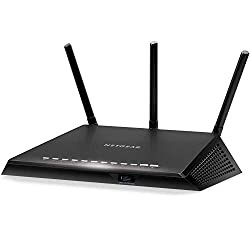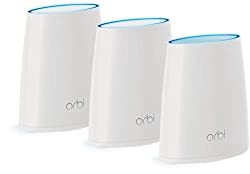5 Tips to Improve Your Internet Speed at Home
1. Test your speed
You can download broadband speed-test apps, or visit speed-test websites, to check your current broadband download and upload speeds, measured in megabits per second (Mbps).
If your speeds are slower than expected, contact your internet service provider for troubleshooting tips and to learn if there is a nearby outage or service disruption affecting your speeds. A router reboot — power it off and turn it back on — may resolve a problem.
If those tips don’t work, you may have an equipment issue, such as an outdated router. Search the router’s model number to see if it’s capable of providing your subscribed speeds. It might need to be updated to take advantage of higher speeds. If updates aren’t available, you may need to purchase a new router or rent an upgraded router from your service provider.
2. Check your internet plan
What speed of service do you subscribe to and is it sufficient to meet new demands? FCC consumer guides on household broadband use and broadband speeds may help determine your home internet-usage needs.
3. Assess in-home connectivity
Most households with internet service use the Wi-Fi (wireless) service on a router. When many wireless devices are using the same Wi-Fi network, it can create lag, or slower responses.
Modern wireless routers often have two or more Wi-Fi signals: one in the 2.4 gigahertz (GHz) band and one in the 5 GHz band. (The higher a GHz number, the faster a processor can run and process data.)
The 2.4 GHz connections generally offer broader coverage, but they process data less quickly than 5 GHz connections. And 2.4 GHz is also the frequency on which many household devices and most Wi-Fi routers operate. If you see a list of other Wi-Fi networks available in your router’s Wi-Fi settings, your performance could be impacted by those neighboring networks.
Routers that use a 5 GHz connection are faster, but their signal covers a shorter range than 2.4 GHz bands. In addition to faster speeds, the 5 GHz band may be less crowded by neighboring Wi-Fi networks and offer more stable connections.
Quick tip: A direct ethernet cable connection between your router and a device that accesses the Internet—such as a cord connecting your laptop and router—will provide the highest speeds.
Consider dedicating the 5 GHz network on your router to your most important uses, such as telework or school work. Change the password or manage the devices that access your Wi-Fi network to keep nonessential devices from connecting. For more advanced network partition options, consult your router’s manual. To maximize Wi-Fi coverage in your home, place the router in a central location. A Wi-Fi range extender or a system of mesh network routers also can improve Wi-Fi signal strength throughout your home.
A direct ethernet cable connection between your router and a device that accesses the Internet — such as a cord connecting your laptop and router — will provide the highest speeds and alleviate Wi-Fi congestion issues. If your laptop (or other Internet device such as a streaming TV or gaming system) does not have an ethernet port, consider using a USB ethernet adapter.


4. Set up a schedule
Even the latest Wi-Fi routers with fast service speeds can get bogged down by a family trying to do multiple things at once: stream video, play graphics-intensive games, use virtual private networks (VPNs) and video conference. Set guidelines with your family and discuss daily schedules to prioritize usage and avoid performance issues. If your job offers flexible hours, you may be able to work around high-traffic times on your home network.
Quick tip: Another way to alleviate home Wi-Fi network congestion is to disconnect your cellular devices from your Wi-Fi network.
5. Explore your options
If you get a good cellular signal in your home, another way to alleviate home Wi-Fi network congestion is to disconnect your cellular devices from your Wi-Fi network. You may be able to use your cellular device as a mobile hot spot, through which you can connect noncellular devices, such as a laptop, to your cellular service.
But before switching any of your devices to cellular-only service, check your cellular data plan to make sure you won’t exceed data caps and incur overage charges. You also can explore options for fixed wireless service or other cellular alternatives in your area.
Quick tip: Set guidelines with your family and discuss daily schedules to prioritize usage of computer devices. and avoid performance issues.
If you’re not seeing congestion on your in-home Wi-Fi network, turning on Wi-Fi and Wi-Fi calling from your smartphone can conserve data and reduce potential congestion on mobile networks. It can also help prevent data overage charges on your mobile phone plan.
Many service providers have committed to providing free Wi-Fi hot spots during the pandemic. Some are offering discounts or temporary upgrades at low or no cost, or eliminating caps on data plans. Learn more about what carriers are doing to support their customers.
If you need help settting up your Wireless Network I have the tools and skills